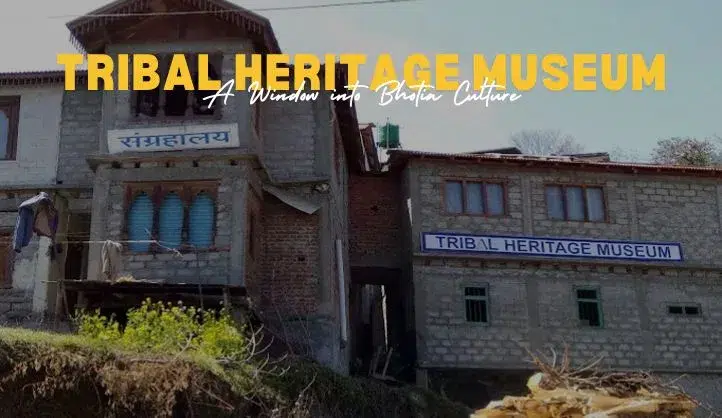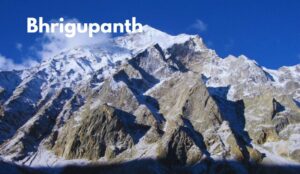Hidden in the breathtaking Himalayas, the Tribal Heritage Museum in Munsiyari is a treasure trove of the Bhotia tribe’s rich culture. From ancient artifacts to fascinating stories, this museum takes you on a journey through time. If you’re planning a trip to Munsiyari, this is a must-visit spot!
In this ultimate guide, you’ll discover:
✔️ History & significance of the museum
✔️ What to see inside (rare artefacts, photographs)
✔️ Entry fee, timings, and best time to visit
✔️ How to reach (by road, air, or bus)
✔️ Nearby attractions (Birthi Falls, Khalia Top)
✔️ Visitor tips & FAQs
Let’s dive in!
What Makes This Museum Special?
Founded in 1997 by local visionary Sher Singh Pangtey, the museum began as a personal collection and has grown into an important cultural institution. Its authentic displays showcase:
-
Traditional Bhotia clothing and intricate silver jewellery
-
Ancient household utensils and cooking tools
-
Spiritual artefacts used in religious ceremonies
-
Historical photographs documenting tribal life
-
Tools from the traditional wool trade that sustained the community
How to Reach the Tribal Heritage Museum
By Air
The nearest airport is Pantnagar (286 km away). From there, you can hire a taxi or take a bus to Munsiyari (10-12 hour journey).
By Train
Kathgodam railway station (250 km away) is the closest railhead. Regular buses and taxis connect to Munsiyari (10-11 hour trip).
By Road
From Delhi: 550 km (14 to 15 hour drive via NH9 and NH109)
From Dehradun: 350 km (10 to 12 hours scenic drive)
Local Transport: Once in Munsiyari, the museum is easily accessible on foot from the main market area or via short taxi rides.
Best Time to Visit
Ideal Months
-
March to June: Pleasant weather (15-25°C), clear mountain views
-
September to November: Cool temperatures, vibrant autumn colours
Seasons to Avoid
-
July-August: Heavy monsoon rains may cause roadblocks
-
December-February: Extreme cold (sub-zero temperatures) with possible snow closures
Pro Tip: Morning visits (8-11 AM) offer the best lighting for viewing exhibits and fewer crowds.
Tribal Heritage Museum Timings, Entry Fee & Location
Location: Near Munsiyari market, easily walkable from most hotels
Opening Hours: 8:00 AM – 5:00 PM daily (extended to 6:00 PM in peak season)
Entry Fees:
-
₹20 for Indian visitors
-
₹50 for foreign nationals
Photography: Allowed (no flash in sensitive areas)
📍 Google Maps Link: Tribal Heritage Museum Location
Enhancing Your Experience
Make the most of your visit by:
-
Opting for the audio guide (₹50) available in English and Hindi
-
Attending the weekly weaving demonstration (every Thursday)
-
Engaging with knowledgeable local guides (₹800-1000/day)
-
Visiting the museum shop for authentic handicrafts
Nearby Attractions to Explore
Extend your cultural journey by visiting these nearby sites:
1. Birthi Falls (30 km away)
Located 30 km from Munsiyari, Birthi Falls is a 120-foot waterfall. It is surrounded by lush forests. The short hike to the base offers excellent photo opportunities, and local tea stalls provide refreshments.
2. Darkot Village (8 km away)
Discover traditional Bhotia weaving techniques and observe artisans creating beautiful woolen shawls and bamboo baskets in the beautiful village known as Darkot Village.
3. Khalia Top (13 km away)
This breathtaking viewpoint at 11,600 feet elevation offers panoramic views of the Panchachuli peaks. The moderate 3 km trek passes through flower-filled meadows.
4. Thamri Kund
Adventure seekers can trek 15 km to this alpine lake at 12,000 feet, known for its crystal-clear waters and surrounding rhododendron forests.
Why Your Visit Matters
By visiting the Tribal Heritage Museum, you’re:
-
Supporting the preservation of indigenous knowledge
-
Helping sustain local artisan communities
-
Gaining authentic insights into Himalayan culture
Tips for Visitors
-
Wear comfortable shoes as you’ll be walking through exhibits
-
Carry cash for entry fees and souvenirs
-
Respect photography restrictions in sacred sections
-
Allow 1-2 hours for a thorough visit
Whether you’re planning a trip to Munsiyari or simply curious about Himalayan cultures, the Tribal Heritage Museum offers an unforgettable window into the region’s living heritage. Have you visited this museum? Share your experiences in the comments below!
The Untold Story Behind the Museum’s Creation
While most guides mention Sher Singh Pangtey as the founder, few know:
The Museum’s Dramatic Origin:
-
Built in 1997 after Pangtey rescued artifacts being sold as antiques
-
The original collection was stored in his home attic for 3 years
-
Local women donated their wedding jewelry to the first exhibit
Why This Matters Today:
The museum now faces new challenges:
-
Climate control issues affecting woollen artifacts
-
Younger generations losing connection to traditions
-
Digital preservation projects underway
Conclusion
The Tribal Heritage Museum offers more than just artifacts – it’s a living connection to the Bhotia people’s history and traditions. When combined with visits to nearby cultural sites, it creates a profoundly enriching experience that reveals the soul of this Himalayan region. Whether you’re a history enthusiast, cultural explorer, or simply curious about Himalayan traditions, this museum promises an unforgettable journey through time.
FAQs about the Tribal Heritage Museum
1. What are the museum timings?
The museum is open daily from 8:00 AM to 5:00 PM, with extended hours until 6:00 PM during peak season (March-June and September-November).
2. How much is the entry fee?
Entry costs ₹20 for Indian nationals and ₹50 for foreign visitors. Special guided tours are available for ₹100 per person.
3. Is photography allowed inside?
Photography is permitted without flash. Some sensitive artifacts in the ritual section may have restrictions – please check with staff.
4. Are there English explanations available?
Yes, all major displays have English captions. Audio guides in English and Hindi are available for ₹50.
5. How much time should I allocate for the visit?
Most visitors spend 45-60 minutes. Those interested in a detailed study may require 2 hours.
6. Is the museum wheelchair accessible?
The ground floor is fully accessible. The first floor can be viewed via photo albums available at the reception.
7. Are there any special events?
The museum hosts weekly weaving demonstrations every Thursday and special cultural programs during major festivals (check their website for updates).





